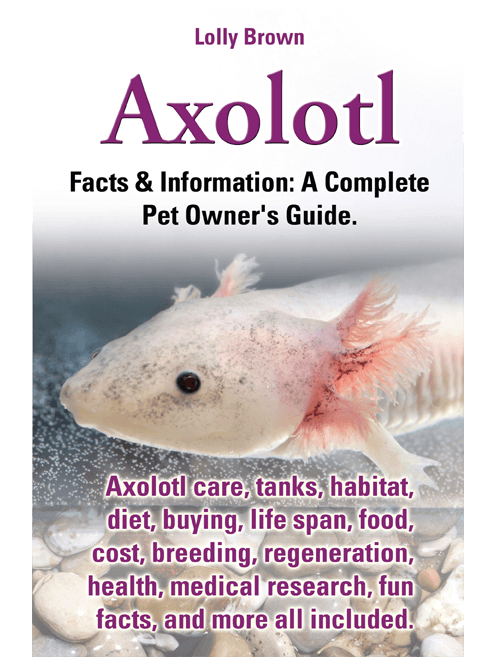TABLE OF CONTENTS
- Foreword 1
- Acknowledgements 4
- Table of Contents 6
- Chapter 1 – What is an Axolotl? 12
- Axolotls are Neotenous 13
- Physical Characteristics of the Axolotl 14
- Feathered Gills and Breathing 15
- Other Forms of Respiration 16
- Distinguishing Gender 17
- Determining Sexual Maturity 17
- Color Variations and Types 18
- “Wild” or Brown Shades 19
- Albino and Golden Albino 20
- Melanoid 20
- Leucistic 21
- Copper 21
- Axolotl Biology 21
- Regenerative Abilities 23
- Chapter 2 – Keeping Pet Axolotls 26
- What to Know Before You Buy 27
- Long Lifespan 27
- Completely Aquatic 28
- Subject to Stresses 28
- Questionable as a Child’s Pet 28
- Axolotls and Other Pets 29
- Sensitive to Blockages 29
- Required Maintenance 30
- Raising Your Own Food 31
- Few Veterinarian Options 32
- Designing a Habitat 33
- Aquarium with Lid 33
- Thermometer 34
- Filter and Water Flow 34
- Using Plants and a Hide Area 35
- Bottom Substrate 36
- Cycling the Tank 37
- The Rudiments of Water Chemistry 37
- Understanding the Nitrogen Cycle 40
- Maintenance Considerations 42
- Feeding Requirements 42
- Earthworms 43
- Aquatic Blackworms 44
- Bloodworms 45
- Daphnia 45
- Pellet Fish Foods 47
- Other Food Choices 47
- Foods to Avoid 48
- Hand Feeding Your Axolotl 49
- Tank Mates 51
- Pros and Cons of Owning an Axolotl 52
- Estimated Cost of Owning an Axolotl 55
- Summary: Feeding Guide 57
- Good Food Sources 57
- Questionable Food Sources 57
- Foods You Can Raise at Home 57
- Chapter 3 – Axolotl Health and Breeding 59
- Water Quality is Crucial 59
- Chlorine Poisoning 60
- Maintaining Water Quality 60
- Consequences of Stress 61
- Potential Treatments 62
- Signs of Disease 65
- Additional Health Conditions 67
- Metabolic Bone Disease 68
- Toxins or Poisons in the Water 70
- An Axolotl Vet? 72
- Axolotl Breeding 73
- Encouraging Reproduction 74
- Hatching Axolotl Eggs 75
- Summary: Axolotl Health 79
- Signs of Illness 79
- Conditions Related to Water Quality 79
- Other Common Health Conditions 79
- Chapter 4 – Axolotls and Medical Research 81
- The Potential for Cell Regeneration 82
- Is Human Cell Regeneration Possible? 82
- How Do Axolotls Regenerate Tissue? 84
- International Axolotl Research 85
- Surveying Axolotls in the Wild 86
- Fostering Retired Axolotls 89
- Afterword 91
- Appendix 1 – Overview of Tiger Salamanders 93
- Physical Characteristics 94
- Required Habitat for Larval Stage 96
- Required Habitat for Adults 96
- Diet and Feeding 98
- Sensitivity to Handling 99
- Notes on Health 99
- Breeding Tiger Salamanders 100
- Housing Multiple Species 101
- Relevant Websites 103
- Frequently Asked Questions 105
- Glossary 112
- Selected Additional Reading 118
- Index 127

